Christmas Tree Worm: It has "trees" instead of tentacles. A strange worm creates a festive mood and saves reefs from extinction (8 photos)
So, you want to hide from the holiday bustle, but even under water the New Year's mood awaits you. Because real Christmas trees grow at the bottom of the sea. And no, Cthulhu did not plant them here in honor of the holidays. In fact, under the guise of a Christmas tree is hiding a sea worm, unusual in all respects. 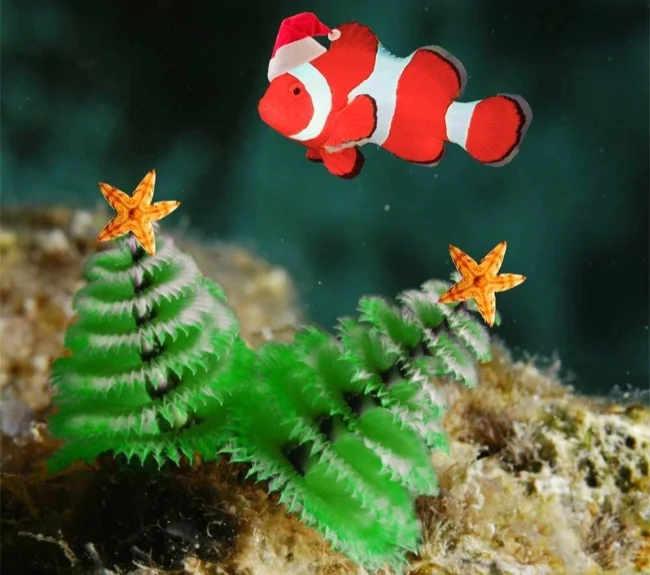
These worms live in tropical seas and belong to the serpulid family, which includes more than 300 species. But only these dudes can boast of decoration in the form of two elegant Christmas trees. They come in all possible colors: yellow, red, blue, spotted, and even speckled gray-brown-crimson! 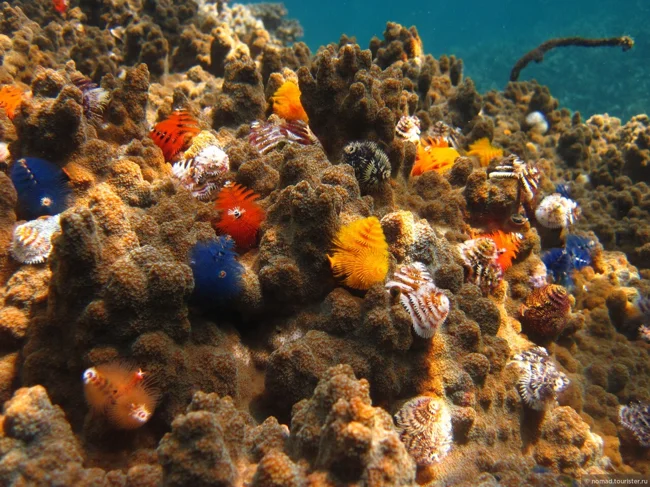
But don’t rush to decorate these trees with toys and garlands. In fact, these are a pair of tentacles covered with many small fibers. For the worm, they act as lips: the palps pick up edible particles from the water and send them directly into the mouth. In addition, with the help of “Christmas trees”, the worm filters various useful substances from the water, including oxygen. 
In general, the Christmas tree worm leads a completely arboreal lifestyle. When he is born, he immediately hurries to “take root” somewhere. Having settled in place, it builds up a calcareous tube around the body - only “herringbones” remain on the surface. 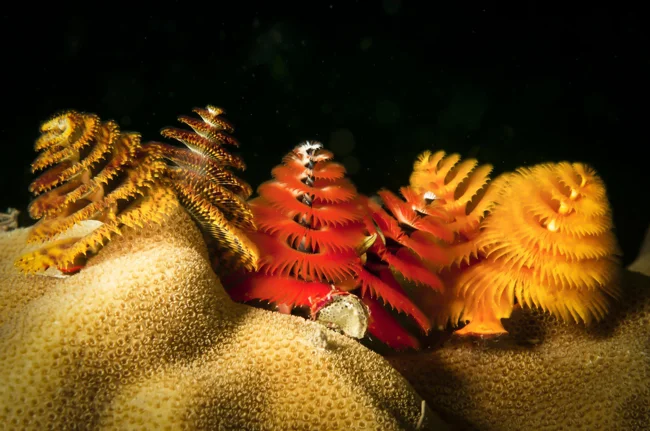
Serpulids are highly prized by aquarium fish lovers. Multi-colored “Christmas trees” on a piece of coral are a bright decoration for the aquarium.
He takes building materials directly from the water: with the help of tentacles, our hero strains out calcium and builds a bunker from it. Our hermit will stay in this tube-house all his life, celebrating the New Year and all the other 365 days. There is no other choice - serpulids do not have appendages for free movement. 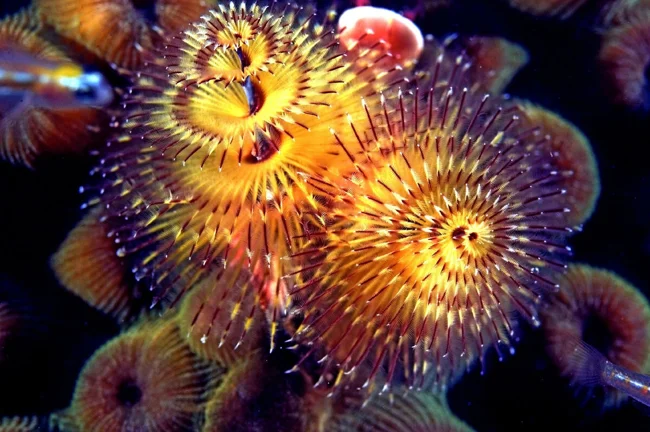
The only people our hero is friends with are corals. The homebodies have developed a strong, mutually beneficial relationship with them. Corals provide living space for fir trees to settle in, and worms provide protection. There is someone to defend against. For example, from the starfish Crown of Thorns. If we were to conduct a "Which Harry Potter character are you" test among sea creatures, this starfish would clearly get the title of Voldemort. Scientists call the spiny monster one of the main culprits in the death of coral reefs. Over the course of a year, stars devour millions of tons of polyps, sometimes completely destroying entire reefs. 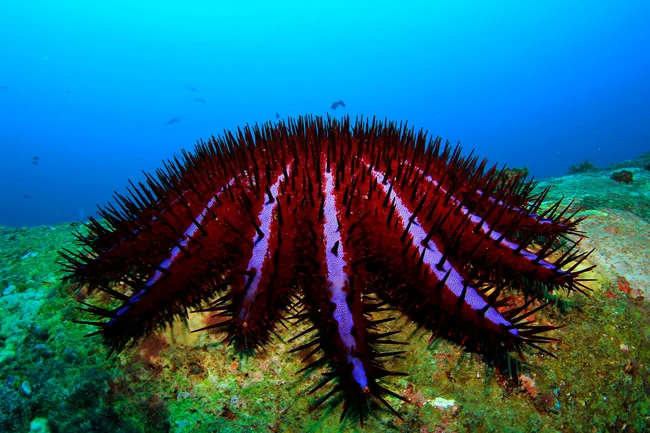
Who would have thought that starfish could look ominous?
In fact, Christmas tree worms are real “couch warriors”: they sit still and don’t know how to fight. But corals still benefit from them. Firstly, Crowns of Thorns feed only on polyps; they are not interested in any kind of fir trees. Therefore, they have to look for places free from “forest plantations.” And this is not easy - most often multi-colored spirals cover the corals very thickly. 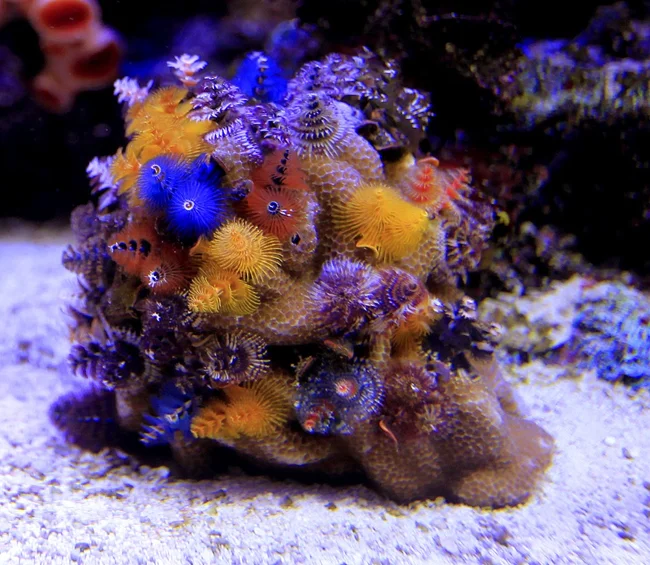
Secondly, the worms eat, hmm... let's say, the seed of starfish, which they throw into the water during the breeding season. This way they prevent a new generation of coral killers from being born. 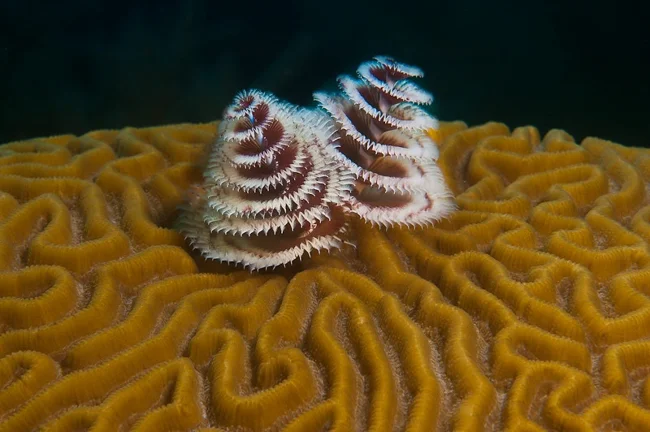
The entire serpulid family is very ancient and has existed on our planet for more than 200 million years. Largely thanks to these worms, majestic coral reefs were once formed. Thanks to them, we see the world's oceans as they are now. Thank you, underwater Christmas trees!
